How Does Water Catchment Work?
In a water catchment system, rainwater is collected from rooftops or other surfaces and directed into storage tanks or reservoirs. The collected water can then be used for various purposes such as irrigation, landscaping, and even for drinking water after proper filtration and treatment.Benefits of Water Catchment
1. Water Conservation: By capturing rainwater, water catchment systems help reduce the demand on traditional water sources. 2. Sustainability: Using rainwater for non-potable purposes can help reduce the reliance on municipal water supplies. 3. Cost Savings: Water catchment can lead to reduced water bills and lower overall water usage costs. 4. Environmental Impact: By using rainwater for irrigation, the need for energy-intensive water pumping can be reduced, lowering the carbon footprint.Study Guide for Water Catchment
To understand water catchment, it is important to explore the following key concepts:- Types of Water Catchment Systems: Explore different methods of collecting and storing rainwater, such as rain barrels, cisterns, and rooftop catchment systems.
- Water Filtration and Treatment: Learn about the importance of filtering and treating collected rainwater to ensure it is safe for various uses.
- Mathematics of Water Catchment: Study the calculations involved in determining the amount of water that can be collected based on rainfall, surface area, and storage capacity.
- Environmental Impact: Discuss the environmental benefits of water catchment and its role in sustainable water management.
- Case Studies: Explore real-world examples of successful water catchment projects and their impact on local communities and ecosystems.
Conclusion
.◂Science Worksheets and Study Guides Third Grade. Weather
Study Guide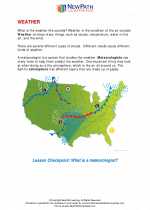 Weather
Weather  Worksheet/Answer key
Worksheet/Answer key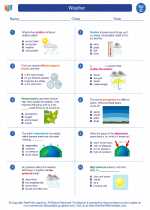 Weather
Weather  Worksheet/Answer key
Worksheet/Answer key Weather
Weather  Worksheet/Answer key
Worksheet/Answer key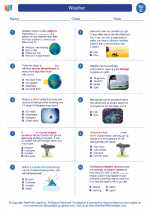 Weather
Weather  Vocabulary/Answer key
Vocabulary/Answer key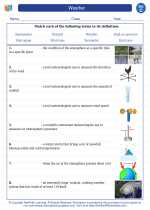 Weather
Weather  Vocabulary/Answer key
Vocabulary/Answer key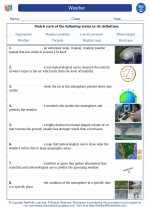 Weather
Weather 

 Worksheet/Answer key
Worksheet/Answer key
 Worksheet/Answer key
Worksheet/Answer key
 Worksheet/Answer key
Worksheet/Answer key
 Vocabulary/Answer key
Vocabulary/Answer key
 Vocabulary/Answer key
Vocabulary/Answer key

The resources above cover the following skills:
EARTH AND SPACE SCIENCE (NGSS)
Earth’s Systems
Students who demonstrate understanding can:
Represent data in tables and graphical displays to describe typical weather conditions expected during a particular season.